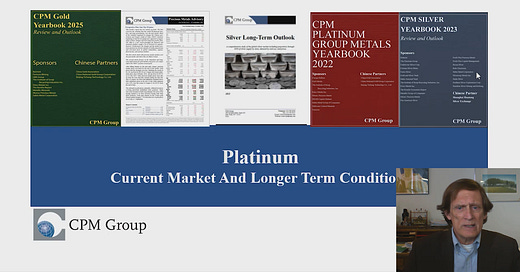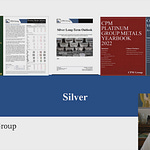Platinum Breaks Out: What’s Really Behind the Price Surge?
Over the past few trading sessions, platinum prices have surged above $1,220 per ounce, breaking out of a range that has held for much of the past 15 months. While some market participants are reading this as a sign of a tightening supply or surging demand, the reality is more complex, and more grounded in market mechanics than in fundamentals.
The Deficit Myth: Why the Market Isn’t as Tight as It Seems
For years, various marketing groups and commentators have promoted the idea that the platinum market is in a persistent supply deficit. It is an appealing narrative for investors, but it does not align with the data.
Despite frequent claims of short supply, CPM Group’s analysis shows that refined platinum inventories remain substantial. Aboveground stockpiles are historically high. Since 1976, the platinum market has only experienced a true supply-demand deficit in seven individual years. In most years, there has been a surplus. Even in periods of reduced mine output, inventory levels have more than covered fabrication demand.
This makes it clear that the recent price action has more to do with perception than with any actual shortage of metal.
What’s Actually Moving the Market?
Jeffrey Christian highlights four key factors driving the recent rally in platinum prices:
Misunderstood Fundamentals
Many investors still believe the platinum market is consistently undersupplied. This belief persists despite years of evidence showing that the market has been well supplied. That misconception creates speculative momentum any time prices begin to rise.Jewelry Demand from China
Platinum jewelry demand in China has seen a modest increase, primarily due to substitution away from gold amid high gold prices. While this demand has added some support to the market, CPM Group estimates that the increase is far smaller than what some other sources report.Optimism About Auto Industry Demand
There is growing hope among investors that an economic soft landing will lead to a rebound in auto production. Platinum is used in catalytic converters for gasoline and diesel vehicles, so auto production trends directly affect demand. However, with electric vehicles making up a growing share of new sales, especially in China, this optimism may be premature.Futures Market Positioning
The short-term tightness in platinum’s futures market, particularly for July contracts, may be creating upward pressure. High open interest levels and relatively low registered inventories have made the market more sensitive to short covering and technical buying.
Why Platinum Prices Continue to Confuse Investors
Institutional and high-net-worth investors have expressed frustration over platinum’s price behavior. For over a decade, the metal has traded between $800 and $1,200, failing to deliver on bullish expectations built around the idea of structural deficits.
Christian explains that much of this confusion stems from how supply-demand balances are reported. Many organizations include estimates of investment demand as part of their deficit calculations. But investors do not consume platinum. They store it, and that metal remains available to the market.
By excluding investment demand and focusing solely on supply versus fabrication demand, CPM Group presents a more accurate picture. This approach explains why prices have remained relatively stable despite claims of tightness.
The Outlook for the Rest of 2025
The recent price move could continue in the near term as technical momentum builds and traders reposition. However, CPM Group remains cautious about the second half of the year. The firm still expects a recession to emerge, which would likely dampen industrial and auto-related demand.
Investors anticipating a long-lasting rally may find themselves disappointed unless a meaningful change occurs in the underlying economic environment or the structure of supply.












Share this post